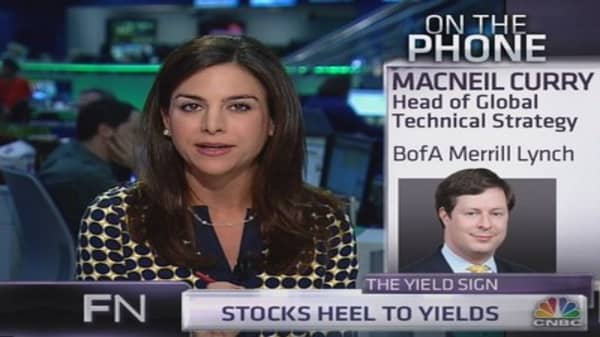A continued selloff in U.S. government bonds could force the Fed to rethink when and by how much it tapers monetary stimulus, according to one strategist, after 10-year Treasury yields spiked to a two-year high on Thursday.
"The rapid rise in yields could make the Federal Reserve nervous especially if it nears the 2.9 percent mark," said Kathy Lien, managing director of FX Strategy at BK Asset Management.
"If come September, 10-year Treasury yields are at 3 percent or higher, the amount of reduction in asset purchases could be smaller and the Fed will downplay expectations for additional tapering. December is still an option but its proximity to the holidays makes it a less desirable time to reduce stimulus than September," she added.
(Read more: Rising interest rates will likely keep rocking stocks)
The 10-year yield rose above 2.8 percent, the highest since August 2011, after positive jobless claims data heighted expectations that the Federal Reserve is close to scaling back its bond purchases, prompting investors to decrease their debt holdings. Initial claims for state unemployment benefits dropped 15,000 to a seasonally adjusted 320,000, the lowest level since October 2007.





